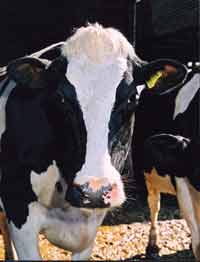Hidden fat can mean type two diabetes in cows

Obese cows are prone to developing “bovine type two diabetes”, according to Dai Grove-White from Liverpool University.
The key to any dry cow feeding programme is minimising weight loss post-calving by maximising dry matter intakes. This will prevent the onset of post-natal conditions such as fatty liver or ketosis.
“Obesity is a real issue in dairy cows,” said Mr Grove-White, “Fat cows will have decreased dry matter intakes in the dry period and early lactation and increased weight loss in early lactation, making them more prone to fatty liver syndrome.
“In the long term they will also have reduced milk yields.
“Research suggests a lot of the processes involved in fatty liver are similar to type two diabetes in humans. We are getting to a stage where ‘bovine type two diabetes’ is a real problem.
“I would say any cow over body condition score three is obese. These are the ones that become hat-racks after calving.”
The issue lies in how fat is distributed in the cow, according to Mr Grove-White. “Subcutaneous fat is the fat layer we can see by eye, and is what we use when body-condition scoring. However, there is still a large proportion of fat that is ‘hidden’ as visceral fat inside the cow.
“Body-condition scoring is a fantastic tool, but it only acts as a measure of fat on the outside. With Holsteins this is a real issue. A Holstein may be thin on the BCS scale, but she may be piling fat reserves on inside.”
A body-condition score of more than three suggests high visceral fat reserves. “In humans, high levels of visceral fat in the abdomen is a real sign of diabetes,” said Mr Grove-White.
“Reduce the energy intake of any cow with a condition score over three, 100 days before drying off,” said Mr Grove-White. “Any cow with a condition score of four or above at this stage should be culled.”
